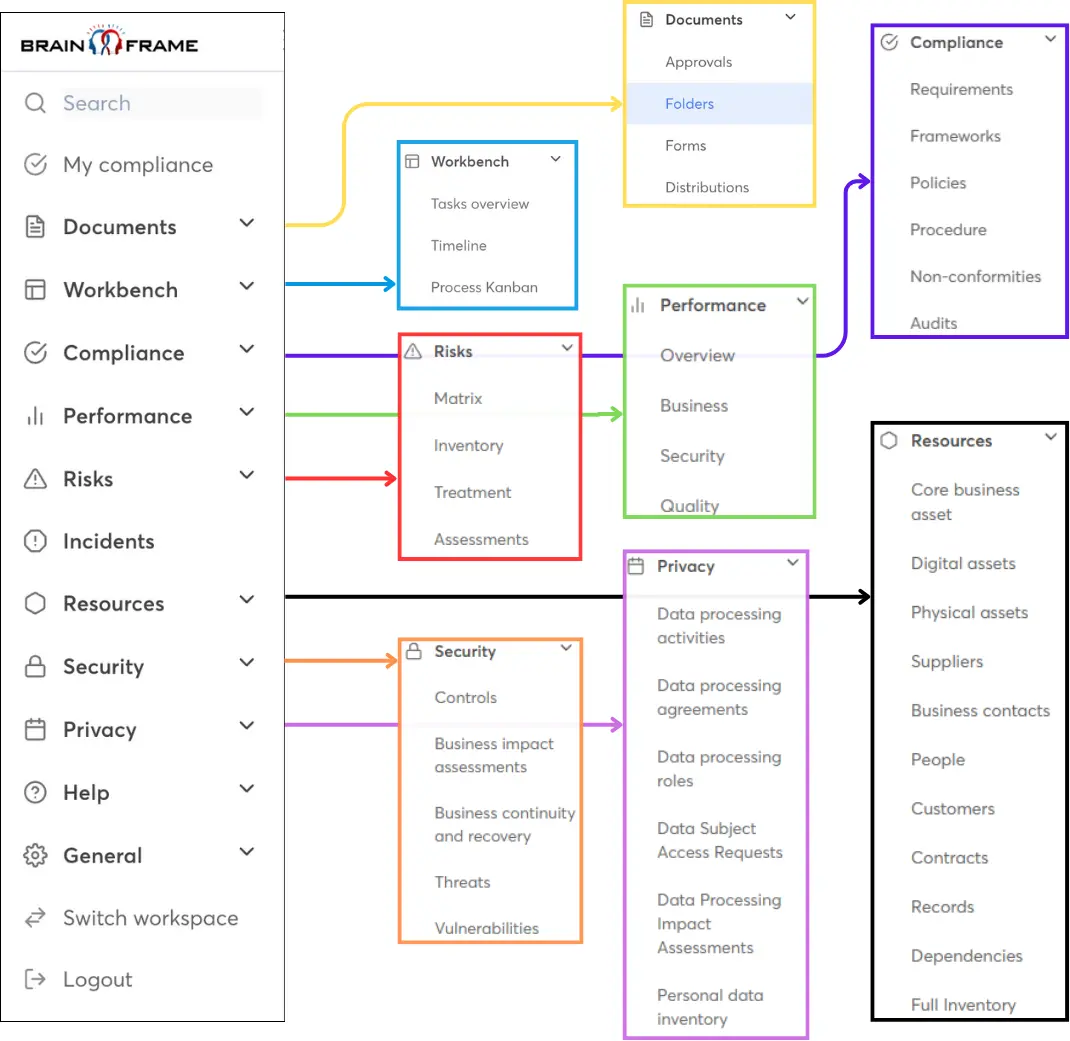Previously
In our last article, we identified and documented primary and support assets critical to achieving ISO 27001 certification. We explored how to map out essential components and understand their business impact, setting the stage for implementing an effective Information Security Management System (ISMS). With a solid foundation of asset management, we now move to a vital phase: Risk Assessment.
Introduction to Risk Assessment
Risk Assessment is the cornerstone of any effective ISMS. It involves identifying, analyzing, and evaluating risks that could impact your organization's assets, enabling you to implement appropriate controls to mitigate them. This process is not just about compliance; it ensures that your organization can operate securely and resiliently in an ever-evolving threat landscape.
1. Identify Potential Threats and Vulnerabilities
The first step in Risk Assessment is identifying threats and vulnerabilities that could affect your assets. This involves examining both external and internal factors that may compromise your organization's security posture.
External Threats:
- Cyber Attacks: These include hacking attempts, malware, ransomware, and phishing attacks that can compromise data integrity and availability. For instance, an attack on administrative systems could lead to unauthorized access to sensitive information.
- Natural Disasters: Events such as earthquakes, floods, or fires that can damage physical infrastructure and disrupt operations, such as the backup and recovery systems.
- Regulatory Changes: New laws or regulations that may impact compliance and operational requirements, affecting document management systems.
- Supplier Risks: Dependence on third-party vendors can introduce risks such as supply chain disruptions, service outages, and breaches due to inadequate security measures by suppliers.
Internal Vulnerabilities:
- System Weaknesses: Outdated software, misconfigured systems, or inadequate security protocols that expose assets to risks. For example, vulnerabilities in communication tools such as VoIP systems that could allow unauthorized access, eavesdropping, or data breaches.
- Human Errors: Mistakes made by employees, such as accidentally deleting data or falling victim to phishing scams.
- Process Failures: Inefficient or poorly defined processes that lead to security gaps or non-compliance with policies, impacting systems like encryption tools.
Scenarios to consider:
- Data Disclosure and Privacy Breach: A scenario where inadequate data handling or illegal processing leads to information leakage, affecting risk management systems.
- Contractual and Procedural Deficiencies: Lack of adequate contractual safeguards resulting in operational disruptions or compliance issues with customer relationship management software.
Tabletop exercises:
A practical approach to uncovering risks is to conduct tabletop exercises with key stakeholders from various departments. These exercises involve simulating risk scenarios and discussing potential issues in a controlled environment. By bringing together diverse perspectives from HR, IT, operations, and security teams, organizations can identify known vulnerabilities and explore how different risks might affect various aspects of the business, and identify potential dependencies in the infrastructure. This collaborative method not only enhances risk awareness but also fosters a proactive culture of risk management.
Questions to consider:
- What are the most likely external threats that could affect our organization?
- What vulnerabilities exist within our current systems, processes, and people?
- How have past incidents highlighted weaknesses in our security posture?
- How reliable are our suppliers, and what risks do they pose to our operations?
2. Risk Analysis to Determine Impact and Likelihood
Once potential threats and vulnerabilities are identified, the next step is to analyze each risk to determine its impact on the organization and its likelihood of occurrence. This analysis helps prioritize risks based on their significance and informs decision-making regarding resource allocation for mitigation efforts.
Risk Analysis Components:
- Impact Assessment: Evaluate the potential consequences of a risk materializing, including financial loss, reputational damage, operational disruption, and regulatory non-compliance. For example, a breach in access control systems could result in unauthorized physical access and significant operational impact.
- Likelihood Evaluation: Assess the probability of a risk occurring, considering historical data, existing controls, and current threat intelligence.
- Risk Level Calculation: Combine impact and likelihood assessments to calculate the overall risk level, often expressed as low, medium, or high.
Exploring Risk Assessment Methodologies
When it comes to conducting risk assessments, organizations can choose from several methodologies tailored to different needs and contexts. For many, particularly small and medium-sized enterprises, the qualitative approach outlined in ISO/IEC 27005 is preferred. This method uses descriptive scales to evaluate risks, making it accessible and easier to communicate to stakeholders without requiring extensive quantitative data.
Alternatively, the Factor Analysis of Information Risk (FAIR) framework provides a quantitative approach that assigns numerical values to assets, threats, and vulnerabilities. This allows for a more precise estimation of risk levels and supports data-driven decision-making by management, especially when prioritizing resources for risk mitigation. FAIR's quantitative model is beneficial for assessing financial impacts and optimizing security investments.
Other popular frameworks include COBIT, which aligns IT governance with business goals; NIST’s Risk Management Framework (RMF), which integrates security and privacy into the system development lifecycle; and OCTAVE, which focuses on identifying critical assets and evaluating vulnerabilities. Each of these frameworks offers unique tools and processes for managing information security risks, allowing organizations to tailor their approach based on their specific objectives and challenges.
By leveraging these methodologies, organizations can systematically assess and address risks, ensuring that their information security management practices are robust and aligned with their overall business strategy.
Approach for Comprehensive Risk Identification:
- Asset-Based Risk Identification: Review the list of primary and support assets to identify specific risks associated with each asset. This ensures that all assets are assessed for potential threats and vulnerabilities.
- Departmental Risk Identification: Engage with different departments (HR, IT, Security Team) to uncover risks specific to their operations. Each department may face unique challenges that need tailored risk assessments. Ensure coordination between the departments to identify dependencies or correlated risks.
Questions to consider:
- What would be the financial and operational impact of each identified risk?
- How likely is it that each risk will occur, based on past incidents and industry trends?
- Which risks pose the greatest threat to our organization's objectives and operations?
- What are the specific risks associated with our critical assets and departments?
3. Develop a Risk Treatment Plan
Based on the risk analysis, develop a high-level risk treatment plan that outlines strategies for managing identified risks. This involves selecting appropriate responses such as mitigation, avoidance, transfer, or acceptance.
- Mitigation: Implement security controls to reduce the impact or likelihood of risks.
- Avoidance: Alter business processes or operations to eliminate risk exposure entirely.
- Transfer : Use insurance or contracts to transfer risk responsibility to third parties.
- Acceptance: Accept the risk without additional action if the cost of mitigation exceeds the potential impact.
Preview of Risk Treatment:
In the next phase, we will delve deeper into risk treatment, where we will explore how to implement specific controls and measure their effectiveness in reducing risks to acceptable levels.
4. Document and Communicate Risk Findings
Documenting the risk assessment process and findings is crucial for transparency and accountability. It ensures that stakeholders are informed about the risks facing the organization and the strategies being implemented to address them.
Documentation Deliverables:
- Risk Register: A comprehensive list of identified risks, their analysis, and mitigation strategies.
- Risk Assessment Report: A detailed report outlining the assessment process, findings, and recommendations for risk management.
- Communication Plan: A strategy for keeping stakeholders informed about risk assessment results and ongoing risk management efforts.
Questions to consider:
- How can we effectively document the risk assessment process to ensure accuracy and completeness?
- What communication channels should be used to update stakeholders on risk findings and mitigation strategies?
- How can we ensure that risk assessment documentation remains up-to-date and relevant?
5. Review and Update Risk Assessment Regularly
Risk assessment is not a one-time exercise. Regular reviews and updates are essential to adapt to changing threat landscapes and organizational developments. This ensures that the ISMS remains effective and responsive to emerging risks.
Review Activities:
- Periodic Assessments: Conduct regular risk assessments to identify new threats and vulnerabilities.
- Change Management: Update risk assessments whenever there are significant changes in the organization's operations, technology, or environment.
- Continuous Monitoring: Implement continuous monitoring processes to detect and respond to new risks in real-time.
Questions to consider:
- How often should we conduct formal risk assessments to ensure ongoing relevance?
- What processes do we have in place to monitor changes that may impact our risk profile?
- How can we leverage technology and automation to enhance our risk monitoring capabilities?
Conclusion
Risk Assessment is a critical step in building a robust ISMS, providing a structured approach to identify, analyze, and evaluate risks that could impact your organization's assets. By understanding the threats and vulnerabilities you face and implementing targeted strategies to address them, you can safeguard your business against potential disruptions and ensure compliance with ISO 27001 standards.
Moving Towards Risk Treatment
With a comprehensive Risk Assessment in place, our next focus will be on Risk Treatment. This phase involves selecting and implementing specific controls to mitigate identified risks, further strengthening our ISMS and enhancing our organization's security posture. Stay tuned as we continue our journey towards ISO 27001 certification, ensuring a secure and resilient future for our organization.
Resources

Start for free now!
Streamline your GRC work using our all-in-one management solution and get access to our network of local specialists
